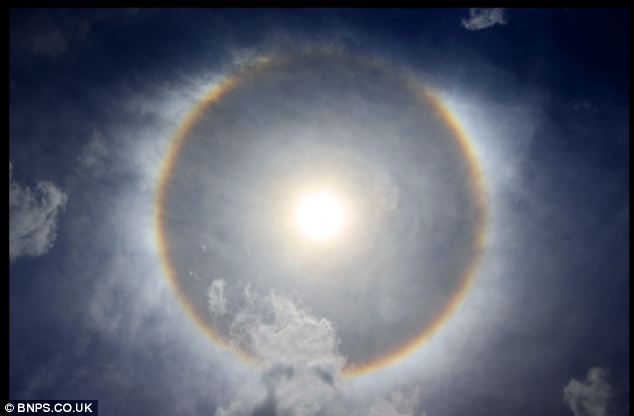
© Times of SwazilandHalo around sun.
Mbabane - It was an unusual day for many, and some thought the world was coming to an end yesterday.
This was due to a circle of light (a halo) that was seen in the morning hours surrounding the sun. A halo, in simple terms, refers to a circle of light or radiance. This caused a lot of panic for many people as most were of the view that the world was coming to an end.
The
Times of Swaziland office was inundated with calls from the public who wanted to find out about the halo around the sun.
This is similar to a rainbow line, though this time it was just around the sun. According to a statement from the Swaziland Meteorological Department, this phenomenon is known as a 22 Degree Halo.
The rainbow-like circle around the sun is caused by the bending of the sun's light due to tiny hexagonal ice crystals in the upper atmosphere.

Comment: You may want to read these, then wake up and smell the ozone:
A Puzzling Collapse of Earth's Cooling Upper Atmosphere
Shields down! Earth's magnetic field may drop in a flash
Earth's Magnetic Field Is Fading